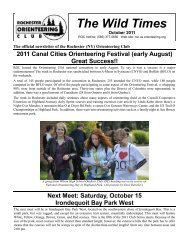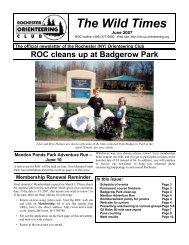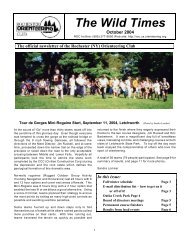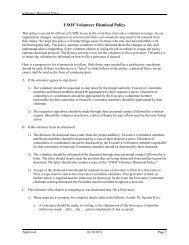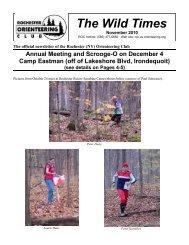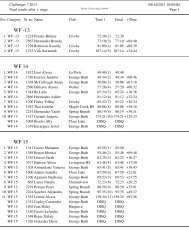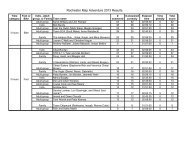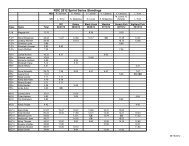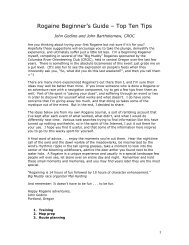A Rules for Foot Orienteering Events - Orienteering USA
A Rules for Foot Orienteering Events - Orienteering USA
A Rules for Foot Orienteering Events - Orienteering USA
Create successful ePaper yourself
Turn your PDF publications into a flip-book with our unique Google optimized e-Paper software.
D.15.6 Competitors who cannot properly see the color used to mark their maps may have<br />
their courses redrawn in a color they can properly see by making their request to a<br />
registration official.<br />
D.16 Courses<br />
D.16.1 The IOF Principles <strong>for</strong> Course Planning <strong>for</strong> Trail <strong>Orienteering</strong> (Appendix 1 of<br />
Trail <strong>Orienteering</strong> <strong>Rules</strong>) shall be followed, with reference to the current<br />
published issue of the IOF Technical Guidelines <strong>for</strong> Elite Trail <strong>Orienteering</strong>.<br />
D.16.2 The standard of the courses shall be worthy of a National trail orienteering event.<br />
The skills of map reading and terrain interpretation and the concentration of the<br />
competitors shall be tested, together with, at the timed controls, speed of decision<br />
making. The courses shall call upon a range of different orienteering techniques.<br />
D.16.3 Any route not passable by all wheelchair users, because of width, protruding<br />
roots, fallen trees or other unsuitable surface must be banned to all and marked in<br />
the terrain by tapes.<br />
D.16.4 Bearing estimation should not be required to greater than 5°.<br />
D.16.5 Distance in range across the terrain estimated by competitors should not be<br />
required to an accuracy better than 25%.<br />
D.16.6 Distance estimation by pacing should not be required to better than 10%.<br />
D.16.7 Given adequate visibility into the terrain, the controls may be set in accordance<br />
with accepted orienteering convention on any feature marked on the map,<br />
provided the center of the circle can be determined by use of position-fixing<br />
techniques and the control feature can be correctly described.<br />
D.16.8 If there is more than one valid way to solve a control problem, all should give the<br />
same answer (see IOF Technical Guidelines <strong>for</strong> Elite Trail <strong>Orienteering</strong> <strong>for</strong> more<br />
detail on this topic).<br />
D.16.9 Course Length and Climb<br />
D.16.9.1 The course lengths shall be given as the length from the start, along the route<br />
to be followed, to the finish and should not normally exceed 3500m.<br />
D.16.9.2 The total climb shall be given as the climb in meters along the route.<br />
D.16.9.3 The climb of a course should normally not exceed 14% <strong>for</strong> more than 20<br />
meters. The cross slope should be no more than 8%.<br />
D.17 Timed Controls



